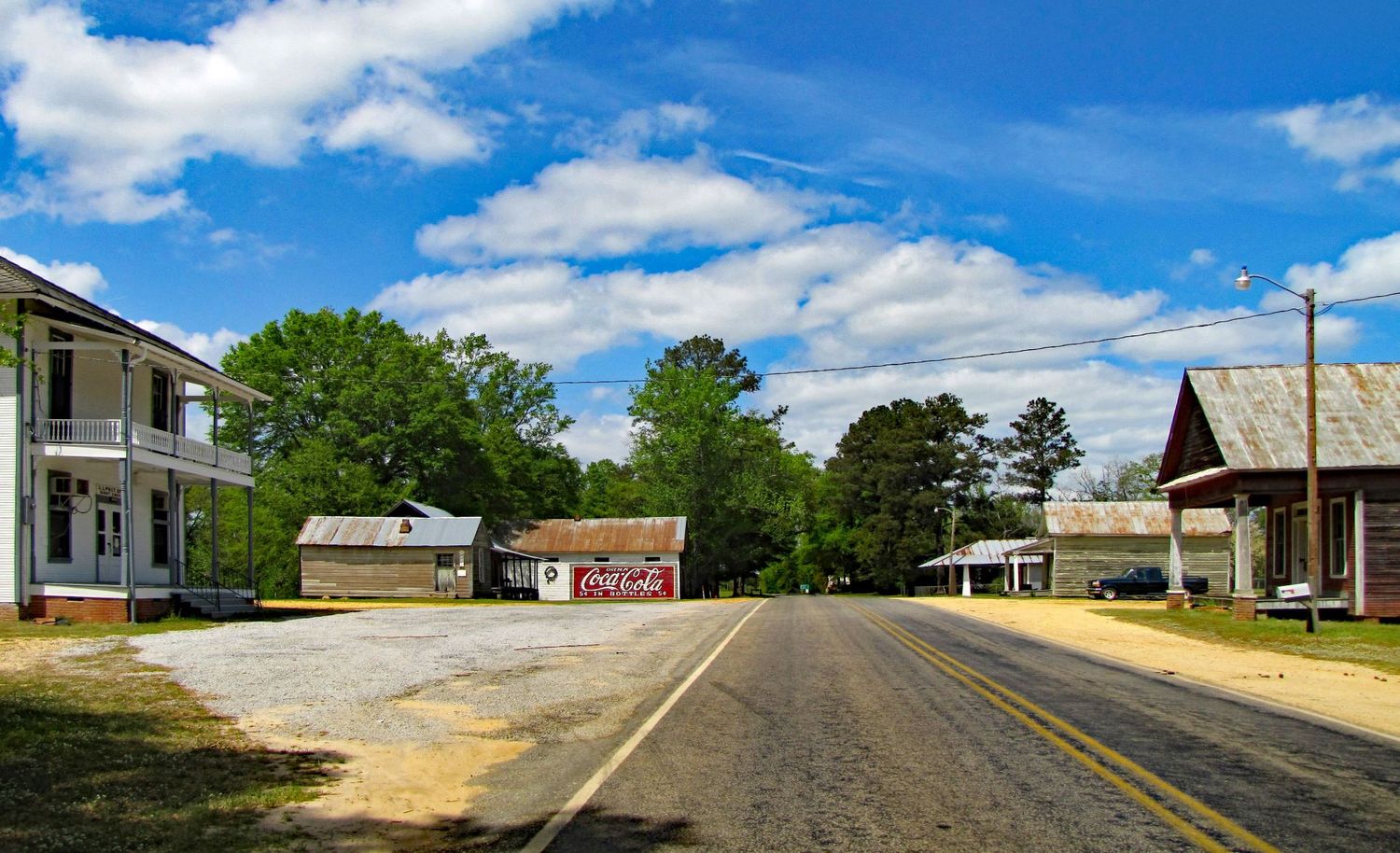
Burnt Corn, Alabama might sound like a quirky name, but this small town is packed with history and charm. Nestled in the heart of the state, Burnt Corn has a rich past dating back to the early 1800s. Ever wondered why it's called Burnt Corn? Legend has it that the name came from a nearby creek where Native Americans once burned cornfields to drive away settlers. Today, this quaint town offers a glimpse into a simpler time with its historic buildings and friendly locals. Whether you're a history buff or just curious, Burnt Corn has plenty of stories to tell. Ready to learn more? Let's dive into 30 fascinating facts about this unique Alabama gem!
Key Takeaways:
- Burnt Corn, Alabama, has a unique name derived from a historical battle. Its small population values rural living and celebrates its rich history through community events and local cuisine.
- Despite its small size, Burnt Corn is rich in history, natural beauty, and cultural significance. Efforts to preserve its heritage and attract new residents contribute to its potential for growth.
Burnt Corn's Unique Name
Burnt Corn, Alabama, has a name that sparks curiosity. Let's dive into some fascinating facts about this small town.
-
Origin of the Name: The town's name comes from a Creek Indian village called Burnt Corn Spring. The name likely refers to a battle where cornfields were set on fire.
-
Historical Significance: Burnt Corn played a role in the Creek War of 1813-1814. The Battle of Burnt Corn Creek was a significant skirmish between American settlers and Creek Indians.
Geography and Demographics
Burnt Corn is a small, unincorporated community with unique geographical and demographic features.
-
Location: Situated on the border of Monroe and Conecuh counties in Alabama, Burnt Corn is nestled in the southern part of the state.
-
Population: The population is small, with fewer than 300 residents. This tight-knit community values its rural lifestyle.
-
Elevation: The town sits at an elevation of approximately 400 feet above sea level, providing a slightly elevated view of the surrounding areas.
Historical Landmarks
Despite its size, Burnt Corn boasts several historical landmarks that tell the story of its past.
-
Burnt Corn Creek: This creek is not just a waterway but a historical landmark. It was the site of the aforementioned battle during the Creek War.
-
Old Federal Road: This road runs through Burnt Corn and was a significant route for settlers moving westward in the early 19th century.
-
Burnt Corn Post Office: Established in 1817, it is one of the oldest post offices in Alabama, though it has since been closed.
Cultural and Social Aspects
Burnt Corn's culture and social life are deeply rooted in its history and community spirit.
-
Community Events: The town hosts annual events like the Burnt Corn Creek Festival, celebrating its rich history and community spirit.
-
Churches: Several historic churches, such as the Burnt Corn Methodist Church, serve as social and cultural hubs for residents.
-
Local Cuisine: Southern cooking is a staple here, with residents often sharing traditional dishes at community gatherings.
Natural Beauty
Burnt Corn is surrounded by natural beauty, making it a picturesque place to live or visit.
-
Forests: The area is rich in forests, providing ample opportunities for hiking, bird watching, and enjoying nature.
-
Wildlife: Deer, turkeys, and various bird species are commonly seen, making it a haven for wildlife enthusiasts.
-
Burnt Corn Creek: Besides its historical significance, the creek offers scenic views and a peaceful environment.
Education and Economy
Education and the local economy play crucial roles in shaping Burnt Corn's community.
-
Schools: The town is served by Monroe County schools, providing education to local children.
-
Agriculture: Farming is a significant part of the local economy, with residents growing crops like corn, soybeans, and cotton.
-
Local Businesses: Small businesses, including general stores and local eateries, support the community's economy.
Notable Residents
Burnt Corn has been home to some notable individuals who have contributed to its legacy.
-
William Weatherford: Also known as Red Eagle, this Creek leader played a significant role in the Creek War and had ties to Burnt Corn.
-
Local Historians: Several residents have dedicated their lives to preserving and sharing the town's rich history.
Modern-Day Burnt Corn
Despite its historical roots, Burnt Corn continues to evolve and adapt to modern times.
-
Internet Access: High-speed internet has reached the town, allowing residents to stay connected with the wider world.
-
Tourism: Visitors come to explore the historical sites and enjoy the natural beauty, contributing to the local economy.
-
Community Projects: Residents often engage in projects to improve local infrastructure and preserve historical landmarks.
Fun Facts
Here are some fun and lesser-known facts about Burnt Corn that add to its charm.
-
Ghost Stories: Local legends tell of ghostly apparitions near Burnt Corn Creek, adding a spooky element to the town's history.
-
Unique Mailbox: A resident once crafted a mailbox shaped like an ear of corn, becoming a quirky local landmark.
-
Film Location: Parts of the town have been used as filming locations for historical documentaries and movies.
Burnt Corn in Popular Culture
Burnt Corn has made its mark in popular culture, despite its small size.
-
Songs: The town has been mentioned in folk songs, celebrating its unique name and history.
-
Books: Several historical novels set in Alabama reference Burnt Corn, adding to its literary significance.
-
Art: Local artists often draw inspiration from the town's scenic beauty and rich history.
Future Prospects
Looking ahead, Burnt Corn has potential for growth and development while preserving its heritage.
-
Historical Preservation: Efforts are ongoing to preserve and restore historical sites, ensuring future generations can learn about Burnt Corn's past.
-
Community Growth: With its strong sense of community and rich history, Burnt Corn continues to attract new residents and visitors.
Burnt Corn's Unique Charm
Burnt Corn, Alabama, may be small, but it's packed with history and quirky facts. From its unusual name to its role in the Creek War, this town has stories that make it stand out. The town's name has sparked curiosity for years, and its historical significance adds depth to its charm.
Whether you're interested in Native American history, early American settlements, or just love discovering unique places, Burnt Corn offers a slice of the past. Its rich heritage and distinctive name make it a fascinating spot for history buffs and curious travelers alike.
Next time you're looking for an off-the-beaten-path adventure, consider a visit to Burnt Corn. You'll find more than just a name; you'll uncover a piece of Alabama's intriguing past.
Frequently Asked Questions
Was this page helpful?
Our commitment to delivering trustworthy and engaging content is at the heart of what we do. Each fact on our site is contributed by real users like you, bringing a wealth of diverse insights and information. To ensure the highest standards of accuracy and reliability, our dedicated editors meticulously review each submission. This process guarantees that the facts we share are not only fascinating but also credible. Trust in our commitment to quality and authenticity as you explore and learn with us.


